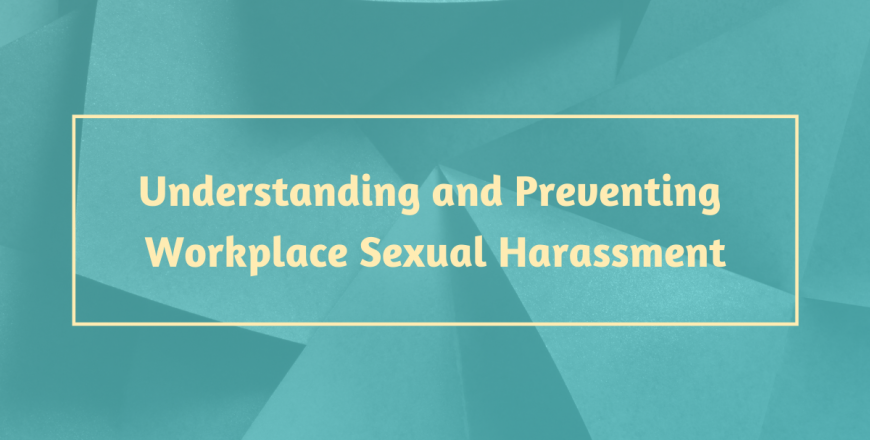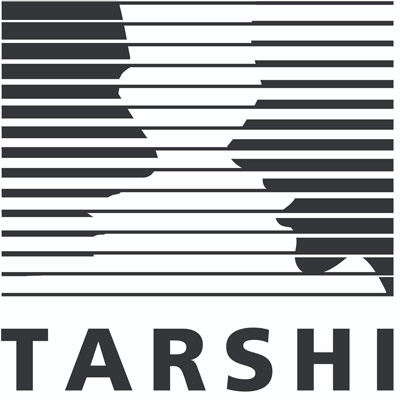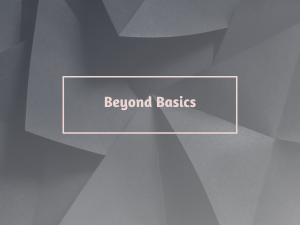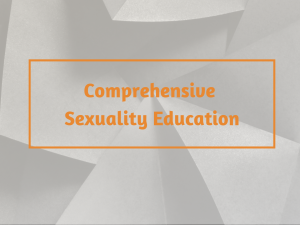Welcome to TARSHI’s eLearning Course – ‘Understanding and Preventing Workplace Sexual Harassment’
Understanding and Preventing Workplace Sexual Harassment
- Overview
- Curriculum
- FAQs
- Notice
- Reviews
What is this course about?
Our Understanding and Preventing Workplace Sexual Harassment course has been developed with the aim of bringing forth a comprehensive understanding of sexual harassment at the workplace, as an issue both individual and institutional. We examine the many Gender and Sexuality-based inequalities and their interaction with other aspects of identity that may be marginalised.
In this course, we expand the definition of and approach towards sexual harassment at the workplace beyond a list of behavioural dos and don’ts. We delve into the invisible and complex dynamics at play at a workplace that give rise to as well as sustain a culture of impunity and silence around Discrimination and harassment.
Further, the course equips learners to recognise the different ways in which sexual harassment may be perpetrated at the workplace and provides a practical know-how of rights. This will equip learners with the tools and resources to seek redress, support victims/survivors, and build a safe, inclusive, and affirming workplace.
Why a course on understanding and preventing workplace sexual harassment
TARSHI developed this course to plug the holes in learners’ access to accurate information regarding workplace sexual harassment. Due to the sensitive and taboo nature of the topic, there is confusion and/or silence around issues like Consent, sexual and gender identities, violence and abuse, Disability, Gender norms and roles, etc. In addition, there are gaps in awareness of anti-sexual harassment laws, guidelines and preventative practices. These topics are often not included in professional training courses in most Indian institutions. Our online course provides learners the resources to understand and address workplace sexual harassment from a rights-based perspective, and analyse it from an intersectional lens.
Our work around SISA spaces is crucial in the development of this course. SISA spaces are:
- Safe from judgment, policing, harassment and violence
- Inclusive of diverse identities and experiences (related to gender, sexuality, mental health, disability, class, caste, religion, marital status, and so on)
- Self-Affirming, i.e. affirming of sexuality, and approach sexuality-related topics from a pleasure, choice- and rights-based perspective
A workplace may be a SISA space if it is free from sexual harassment, or actively addresses and prevents incidence of gender and sexuality-based discrimination and violence, as well as builds a safe and inclusive environment for individuals of diverse identities and experiences.
The course aligns with TARSHI’s goal of dissemination of information on sexuality, SRHR, and burnout prevention from a rights-based perspective, especially for young people, whom we hope to equip to make informed choices about their sexuality.
What are the objectives of the course?
- The course aims to explain sexual harassment at the workplace in an easily Accessible, accurate and engaging way.
- The course discusses workplace sexual harassment as a complex institutional problem instead of simply an individually perpetrated issue, and broadens the scope of prevention beyond a list of dos and dont’s.
- The course presents a nuanced definition of sexual harassment at the workplace and views it from an intersectional lens.
- The course presents learners with information on the Sexual Harassment of Women at Workplace (Prevention, Prohibition and Redressal) Act, 2013.
Acknowledgments
This course was possible due to the effort of many people, especially Nalini Sharma, Nidhi Chaudhary, Ramya Anand from TARSHI, and Vinita Saxena from Slow Made India. We thank Prabha Nagaraja from TARSHI for her enthusiasm, ideation, and reviews at all stages, and thank Anjali Hans for her tireless reviewing and making the language of the course simple and accessible. We would also like to thank Dipika Srivastava for her significant contribution during the initial stages of developing this course.
We thank the TARSHI team for their time and patience in testing the course and providing feedback and observations.
We would also like to thank our external reviewers for their feedback, observations, and for bringing in insights from their respective fields including academia, IT, law, activism/non-profits, the corporate world, and more.
-
11. Welcome to the courseText lesson
-
22. How to useText lessonSorry, this lesson is currently locked. You need to complete "1. Welcome to the course" before accessing it.
-
33. Pre-course surveyText lessonSorry, this lesson is currently locked. You need to complete "2. How to use" before accessing it.
-
44. Welcome to Module IText lessonSorry, this lesson is currently locked. You need to complete "Checking In" before accessing it.
-
55. ObjectivesText lessonSorry, this lesson is currently locked. You need to complete "4. Welcome to Module I" before accessing it.
-
66. Chapter: What is sexual harassment?Text lessonSorry, this lesson is currently locked. You need to complete "5. Objectives" before accessing it.
-
77. GlossaryText lessonSorry, this lesson is currently locked. You need to complete "6. Chapter: What is sexual harassment?" before accessing it.
-
88. Defining sexual harassment at the workplace2 questionsSorry, this lesson is currently locked. You need to complete "7. Glossary" before accessing it.
abcde
-
99. Sexual harassment and power3 questionsSorry, this lesson is currently locked. You need to complete "8. Defining sexual harassment at the workplace" before accessing it.
-
1010. Sexual harassment and power5 questionsSorry, this lesson is currently locked. You need to complete "9. Sexual harassment and power" before accessing it.
-
1111. TakeawaysText lessonSorry, this lesson is currently locked. You need to complete "10. Sexual harassment and power" before accessing it.
-
1212. Case study: Sexual harassment at the workplace – Impact1 questionsSorry, this lesson is currently locked. You need to complete "11. Takeaways" before accessing it.
-
1313. Case study: Sexual harassment at the workplace – Impact1 questionsSorry, this lesson is currently locked. You need to complete "12. Case study: Sexual harassment at the workplace – Impact" before accessing it.
-
1414. Sexual harassment at the workplace – Impact3 questionsSorry, this lesson is currently locked. You need to complete "13. Case study: Sexual harassment at the workplace – Impact" before accessing it.
-
1515. TakeawaysText lessonSorry, this lesson is currently locked. You need to complete "14. Sexual harassment at the workplace – Impact" before accessing it.
-
1616. Chapter: How is sexual harassment invisible, yet prevalent?Text lessonSorry, this lesson is currently locked. You need to complete "15. Takeaways" before accessing it.
-
1717. Barriers to reporting4 questionsSorry, this lesson is currently locked. You need to complete "16. Chapter: How is sexual harassment invisible, yet prevalent?" before accessing it.
-
1818. Debunking myths12 questionsSorry, this lesson is currently locked. You need to complete "17. Barriers to reporting" before accessing it.
-
1919. Listening to victims/survivors2 questionsSorry, this lesson is currently locked. You need to complete "18. Debunking myths" before accessing it.
-
2020. TakeawaysText lessonSorry, this lesson is currently locked. You need to complete "19. Listening to victims/survivors" before accessing it.
-
2121. Chapter: Identifying sexual harassmentText lessonSorry, this lesson is currently locked. You need to complete "20. Takeaways" before accessing it.
-
2222. Case study: Types of sexual harassment1 questionsSorry, this lesson is currently locked. You need to complete "21. Chapter: Identifying sexual harassment" before accessing it.
-
2323. Case study: Types of sexual harassment1 questionsSorry, this lesson is currently locked. You need to complete "22. Case study: Types of sexual harassment" before accessing it.
-
2424. Case study: Types of sexual harassment1 questionsSorry, this lesson is currently locked. You need to complete "23. Case study: Types of sexual harassment" before accessing it.
-
2525. Navigating ‘grey areas’1 questionsSorry, this lesson is currently locked. You need to complete "24. Case study: Types of sexual harassment" before accessing it.
-
2626. Navigating ‘grey areas’13 questionsSorry, this lesson is currently locked. You need to complete "25. Navigating ‘grey areas’" before accessing it.
-
2727. Case study: Navigating ‘grey areas’1 questionsSorry, this lesson is currently locked. You need to complete "26. Navigating ‘grey areas’" before accessing it.
-
2828. Case study: Navigating ‘grey areas’2 questionsSorry, this lesson is currently locked. You need to complete "27. Case study: Navigating ‘grey areas’" before accessing it.
-
2929. TakeawaysText lessonSorry, this lesson is currently locked. You need to complete "28. Case study: Navigating ‘grey areas’" before accessing it.
-
3030. Welcome to Module IIText lessonSorry, this lesson is currently locked. You need to complete "Module I: Understanding Sexual Harassment" before accessing it.
-
3131. ObjectivesText lessonSorry, this lesson is currently locked. You need to complete "30. Welcome to Module II" before accessing it.
-
3232. Chapter: Evolution of anti-sexual harassment legislationText lessonSorry, this lesson is currently locked. You need to complete "31. Objectives" before accessing it.
-
3333. The Vishakha Guidelines3 questionsSorry, this lesson is currently locked. You need to complete "32. Chapter: Evolution of anti-sexual harassment legislation" before accessing it.
-
3434. TakeawaysText lessonSorry, this lesson is currently locked. You need to complete "33. The Vishakha Guidelines" before accessing it.
-
3535. Case study: What constitutes sexual harassment?1 questionsSorry, this lesson is currently locked. You need to complete "34. Takeaways" before accessing it.
-
3636. Case study: What constitutes sexual harassment?1 questionsSorry, this lesson is currently locked. You need to complete "35. Case study: What constitutes sexual harassment?" before accessing it.
-
3737. Case study: What constitutes sexual harassment?1 questionsSorry, this lesson is currently locked. You need to complete "36. Case study: What constitutes sexual harassment?" before accessing it.
-
3838. Case study: What constitutes sexual harassment?1 questionsSorry, this lesson is currently locked. You need to complete "37. Case study: What constitutes sexual harassment?" before accessing it.
-
3939. Case study: What constitutes sexual harassment?1 questionsSorry, this lesson is currently locked. You need to complete "38. Case study: What constitutes sexual harassment?" before accessing it.
-
4040. Employer duties3 questionsSorry, this lesson is currently locked. You need to complete "39. Case study: What constitutes sexual harassment?" before accessing it.
-
4141. TakeawaysText lessonSorry, this lesson is currently locked. You need to complete "40. Employer duties" before accessing it.
-
4242. Values and work culture4 questionsSorry, this lesson is currently locked. You need to complete "41. Takeaways" before accessing it.
-
4343. TakeawaysText lessonSorry, this lesson is currently locked. You need to complete "42. Values and work culture" before accessing it.
-
4444. Chapter: Anti-sexual harassment law and beyondText lessonSorry, this lesson is currently locked. You need to complete "43. Takeaways" before accessing it.
-
4545: ‘Where’, ‘when’ and ‘who’?4 questionsSorry, this lesson is currently locked. You need to complete "44. Chapter: Anti-sexual harassment law and beyond" before accessing it.
-
4646. TakeawaysText lessonSorry, this lesson is currently locked. You need to complete "45: ‘Where’, ‘when’ and ‘who’?" before accessing it.
-
4747. All about the IC9 questionsSorry, this lesson is currently locked. You need to complete "46. Takeaways" before accessing it.
-
4848. All about the IC3 questionsSorry, this lesson is currently locked. You need to complete "47. All about the IC" before accessing it.
-
4949. Case study: All about the IC1 questionsSorry, this lesson is currently locked. You need to complete "48. All about the IC" before accessing it.
-
5050. Case study: All about the IC1 questionsSorry, this lesson is currently locked. You need to complete "49. Case study: All about the IC" before accessing it.
-
5151. TakeawaysText lessonSorry, this lesson is currently locked. You need to complete "50. Case study: All about the IC" before accessing it.
-
5252. How to file a complaint?9 questionsSorry, this lesson is currently locked. You need to complete "51. Takeaways" before accessing it.
-
5353. TakeawaysText lessonSorry, this lesson is currently locked. You need to complete "52. How to file a complaint?" before accessing it.
-
5454. Timeline of an inquiry3 questionsSorry, this lesson is currently locked. You need to complete "53. Takeaways" before accessing it.
-
5555. Timeline of an inquiry10 questionsSorry, this lesson is currently locked. You need to complete "54. Timeline of an inquiry" before accessing it.
-
5656. TakeawaysText lessonSorry, this lesson is currently locked. You need to complete "55. Timeline of an inquiry" before accessing it.
-
5757. ConclusionText lessonSorry, this lesson is currently locked. You need to complete "Module II: Understanding Anti-Sexual Harassment Law" before accessing it.
-
5858. Additional resourcesText lessonSorry, this lesson is currently locked. You need to complete "57. Conclusion" before accessing it.
-
5959. Post-course surveyText lessonSorry, this lesson is currently locked. You need to complete "58. Additional resources" before accessing it.
-
6060. Thank youText lessonSorry, this lesson is currently locked. You need to complete "59. Post-course survey" before accessing it.
2. It may be of particular interest to people working in non-governmental organisations, individuals/collectives working on issues around gender and sexuality, managers, HR professionals, teachers, college professors, and students.
3. The course can also be taken for the purpose of acquiring knowledge or as a refresher by Internal Committee members.
We have been making a few updates to the eLearning interface.
To log in to the course, please click on the Register button and enter your username and password. If you face any issues with the interface, please write to us at mail@tarshi.net.
Happy learning!





